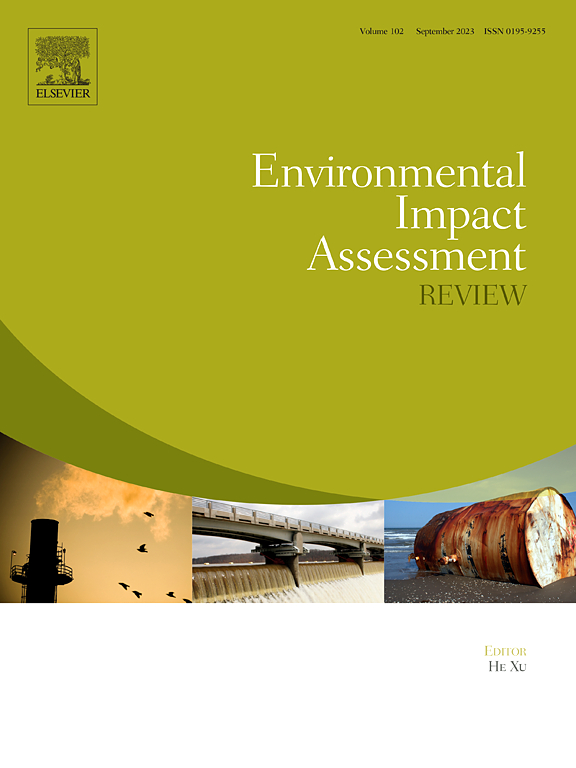Non-linear responses and critical thresholds of human well-being to ecosystem services across land-use intensities in urbanizing areas
IF 9.8
1区 社会学
Q1 ENVIRONMENTAL STUDIES
引用次数: 0
Abstract
Human well-being (HWB) cannot be sustained without ecosystem services (ESs). While many studies have explored the complex relationship between ESs and HWB, few have focused on their non-linear relationships and threshold effects, and how these vary under different land-use intensities. This study quantified and mapped ESs and HWB from 2000 to 2020 in the Xiamen-Zhangzhou-Quanzhou area in China. To examine how each ES contributed to HWB and their variation across land-use intensities, the random forest was employed. Restricted cubic splines were applied to identify non-linear relationships and critical thresholds, examining how these relationships changed with varying land-use intensity. The findings show that among different ESs, grain production had the greatest impact on HWB throughout the entire area, as well as in both areas with low and high land-use intensities. ESs and HWB had a significant variation of relationships, most of which displayed non-linear patterns and threshold effects. Many associations followed an inverted “U” shape, with a maximum threshold. The non-linear relationship between ESs and HWB differed across land-use intensities. It is manifest mostly from a significant nonlinear relationship in the low land-use intensity areas to a non-significant one in the high land-use intensity areas. HWB was less dependent on local ESs in areas with high land-use intensity than low land-use intensity, revealing a social-ecological system archetype of change. Critical threshold identification of how ESs and HWB interact can help guide social-ecological systems toward sustainable development.
城市化地区不同土地利用强度人类福祉对生态系统服务的非线性响应及临界阈值
没有生态系统服务,人类福祉(HWB)就无法维持。虽然许多研究都探讨了生态环境与土地利用强度之间的复杂关系,但很少有人关注它们之间的非线性关系和阈值效应,以及它们在不同土地利用强度下的变化规律。本文对2000 - 2020年厦门-漳州-泉州地区的ESs和HWB进行了量化和制图。为了研究每个ES对HWB的贡献及其在土地利用强度上的变化,我们采用了随机森林。应用限制三次样条来确定非线性关系和临界阈值,并研究这些关系如何随土地利用强度的变化而变化。结果表明:在不同的生态环境中,粮食生产对整个区域以及低、高土地利用集约区HWB的影响最大;ESs与HWB之间的关系存在显著的变化,且大部分表现为非线性模式和阈值效应。许多关联遵循倒“U”形,具有最大阈值。在不同的土地利用强度下,生态承载力与HWB呈非线性关系。主要表现为低土地利用强度地区的显著非线性关系到高土地利用强度地区的不显著非线性关系。高土地利用强度地区对生态环境的依赖程度低于低土地利用强度地区,揭示了一种社会生态系统的变化原型。确定生态环境与生态环境相互作用的临界阈值有助于引导社会生态系统走向可持续发展。
本文章由计算机程序翻译,如有差异,请以英文原文为准。
求助全文
约1分钟内获得全文
求助全文
来源期刊

Environmental Impact Assessment Review
ENVIRONMENTAL STUDIES-
CiteScore
12.60
自引率
10.10%
发文量
200
审稿时长
33 days
期刊介绍:
Environmental Impact Assessment Review is an interdisciplinary journal that serves a global audience of practitioners, policymakers, and academics involved in assessing the environmental impact of policies, projects, processes, and products. The journal focuses on innovative theory and practice in environmental impact assessment (EIA). Papers are expected to present innovative ideas, be topical, and coherent. The journal emphasizes concepts, methods, techniques, approaches, and systems related to EIA theory and practice.
 求助内容:
求助内容: 应助结果提醒方式:
应助结果提醒方式:


